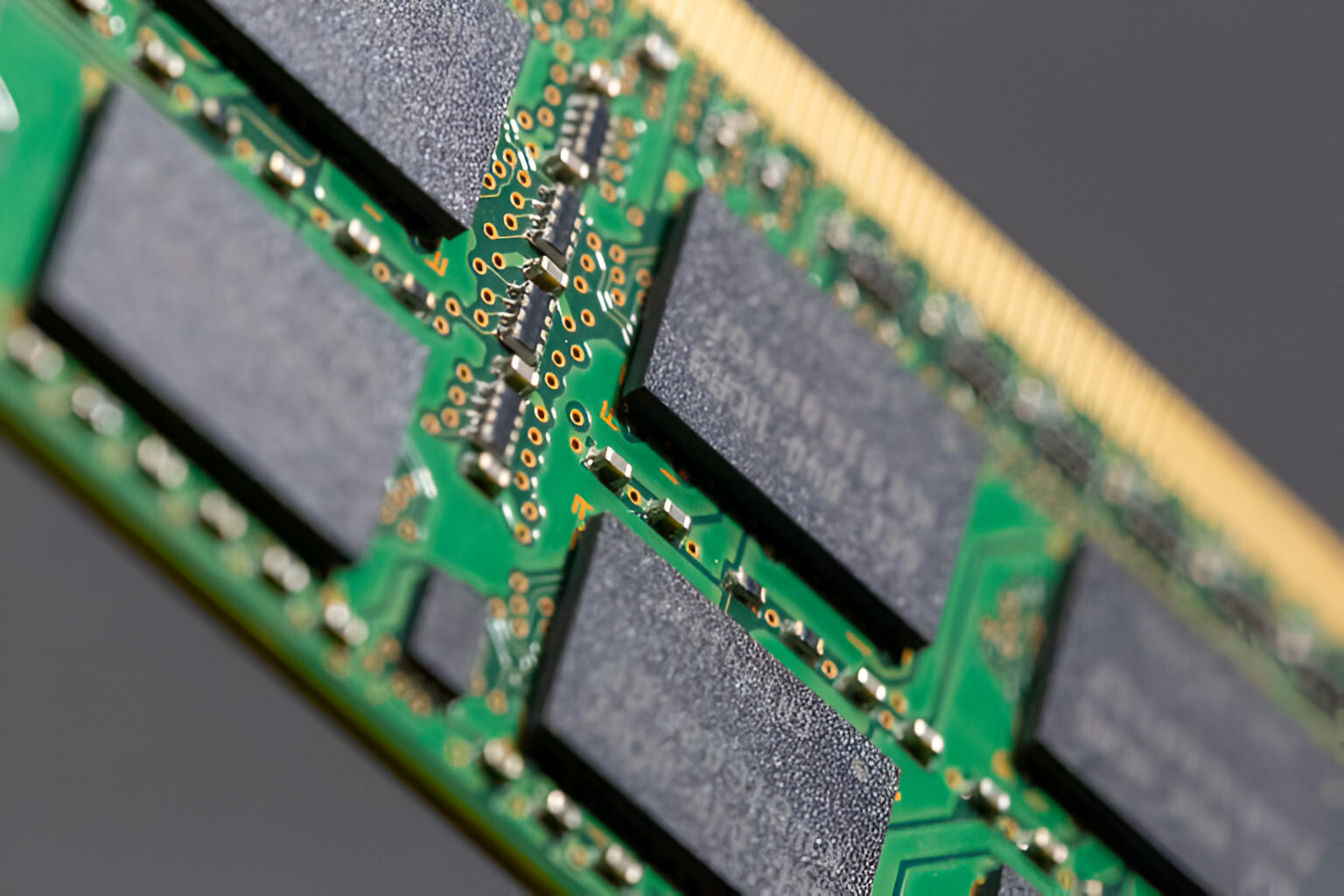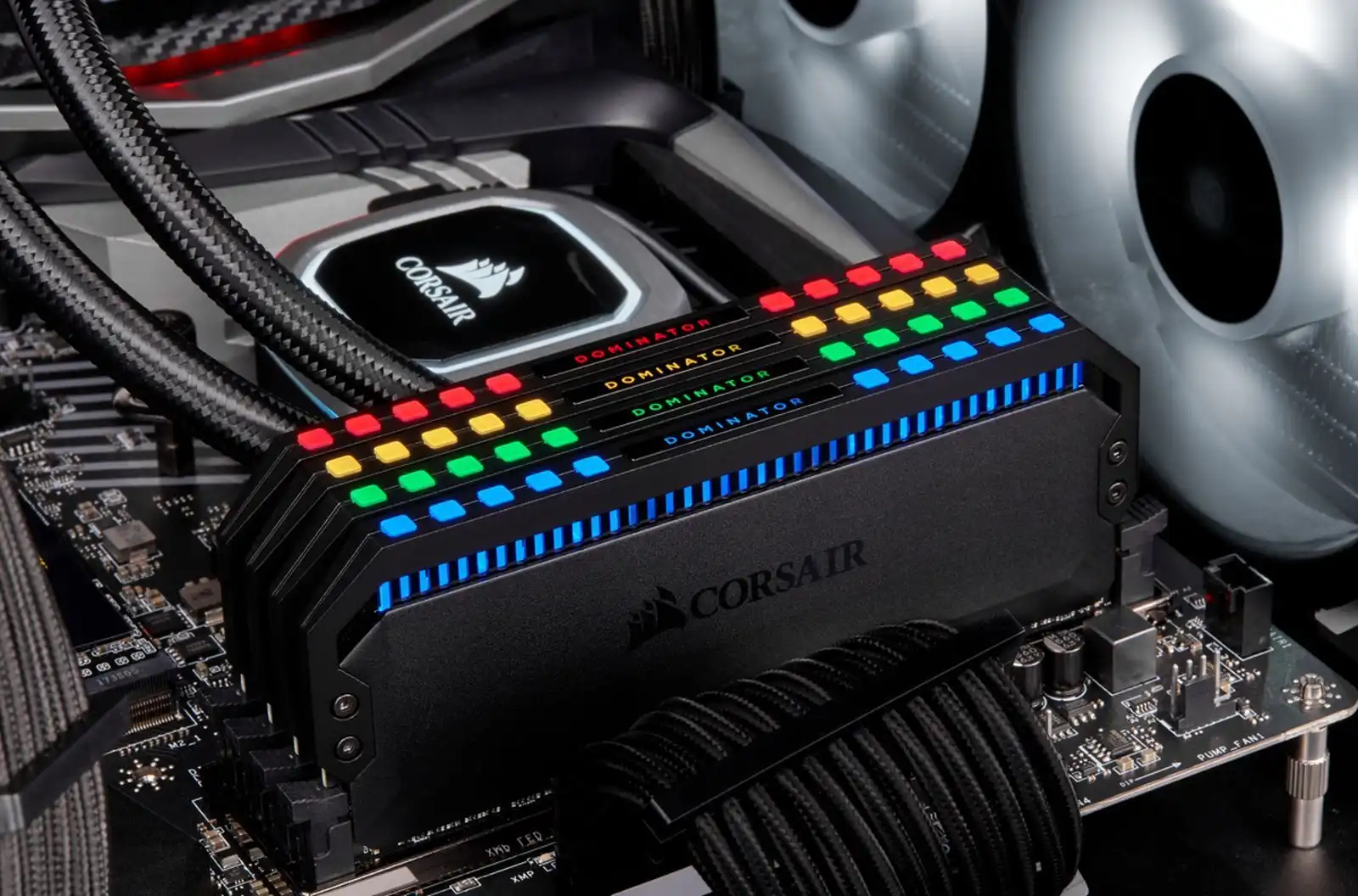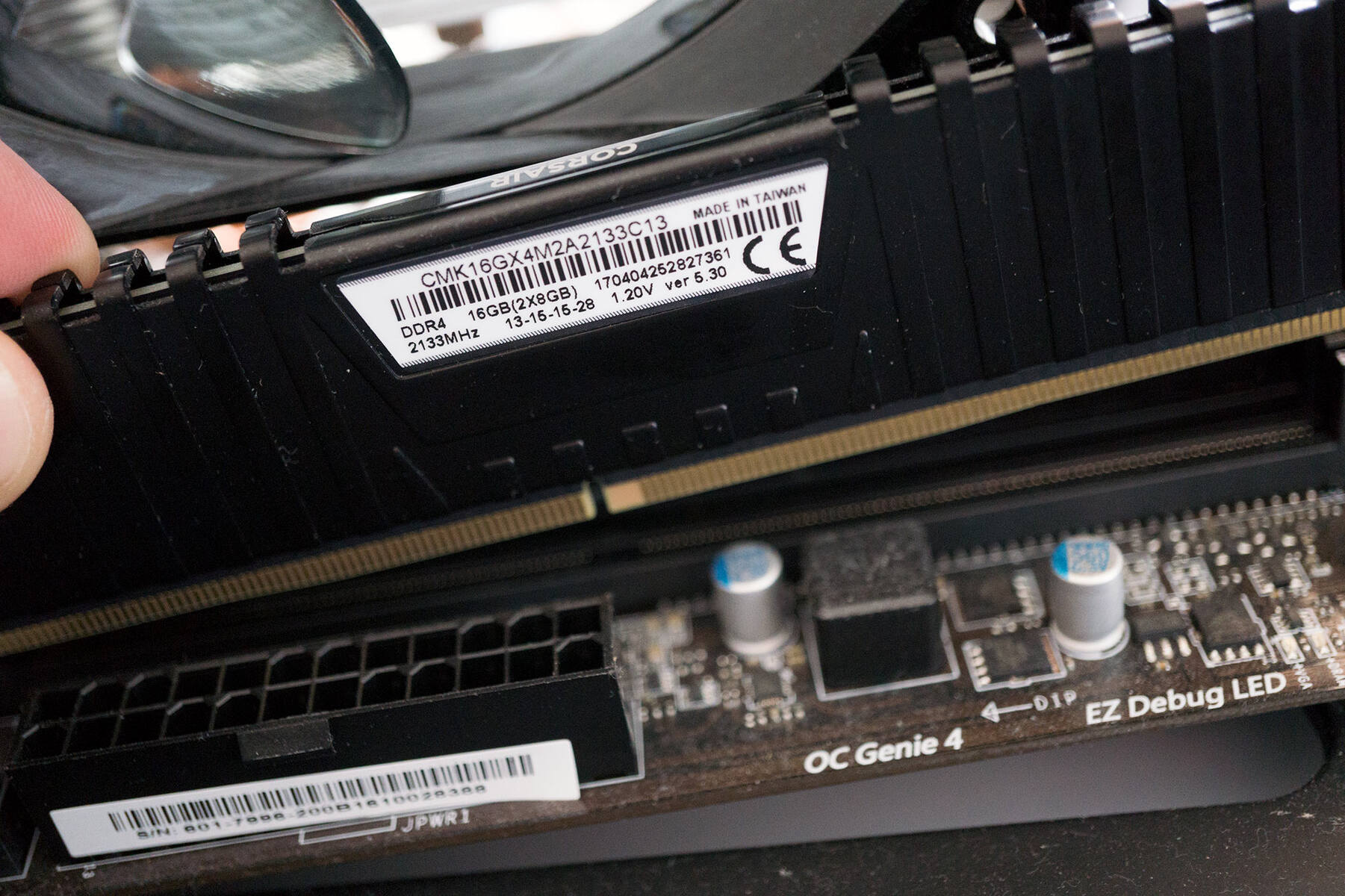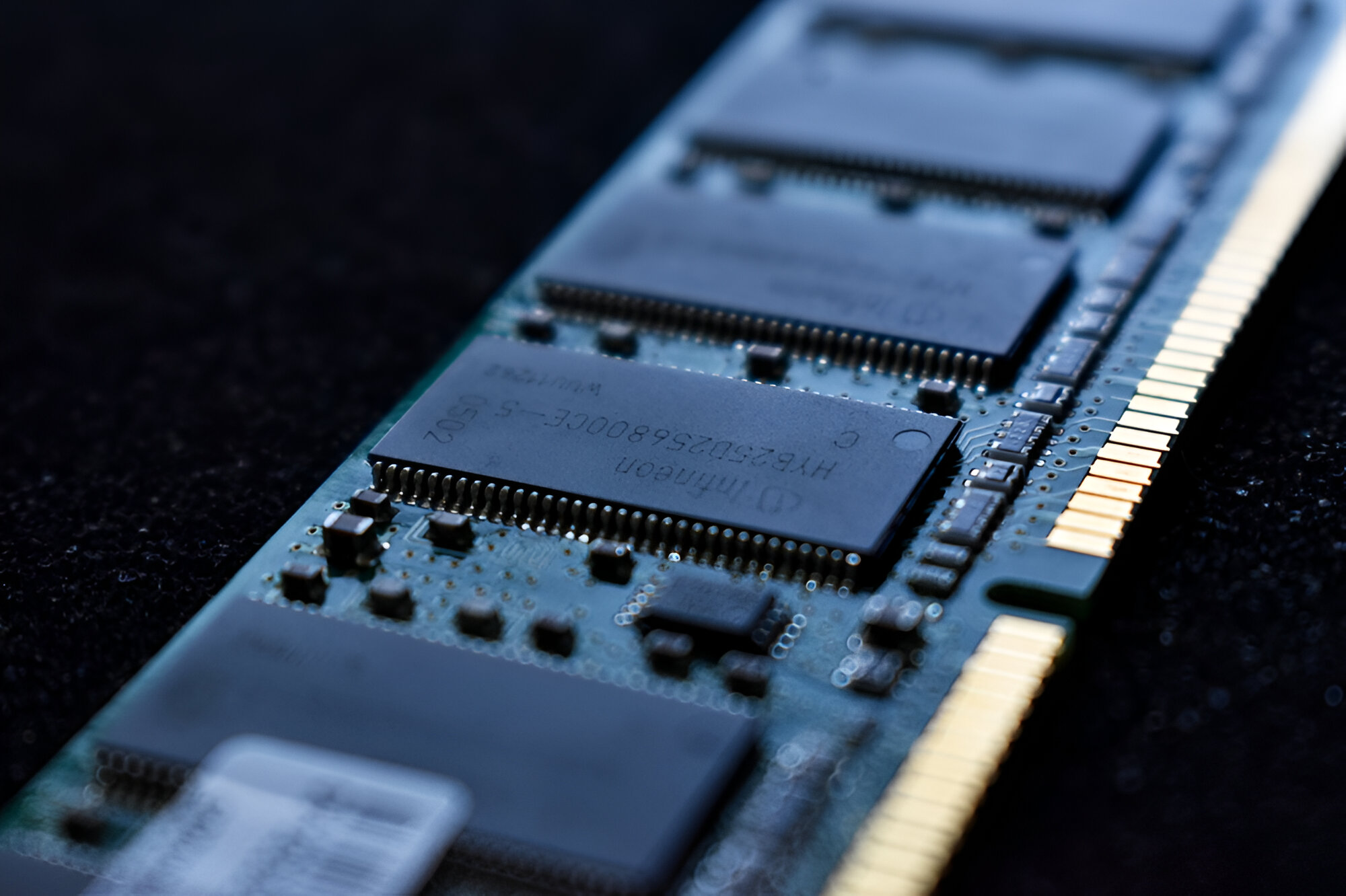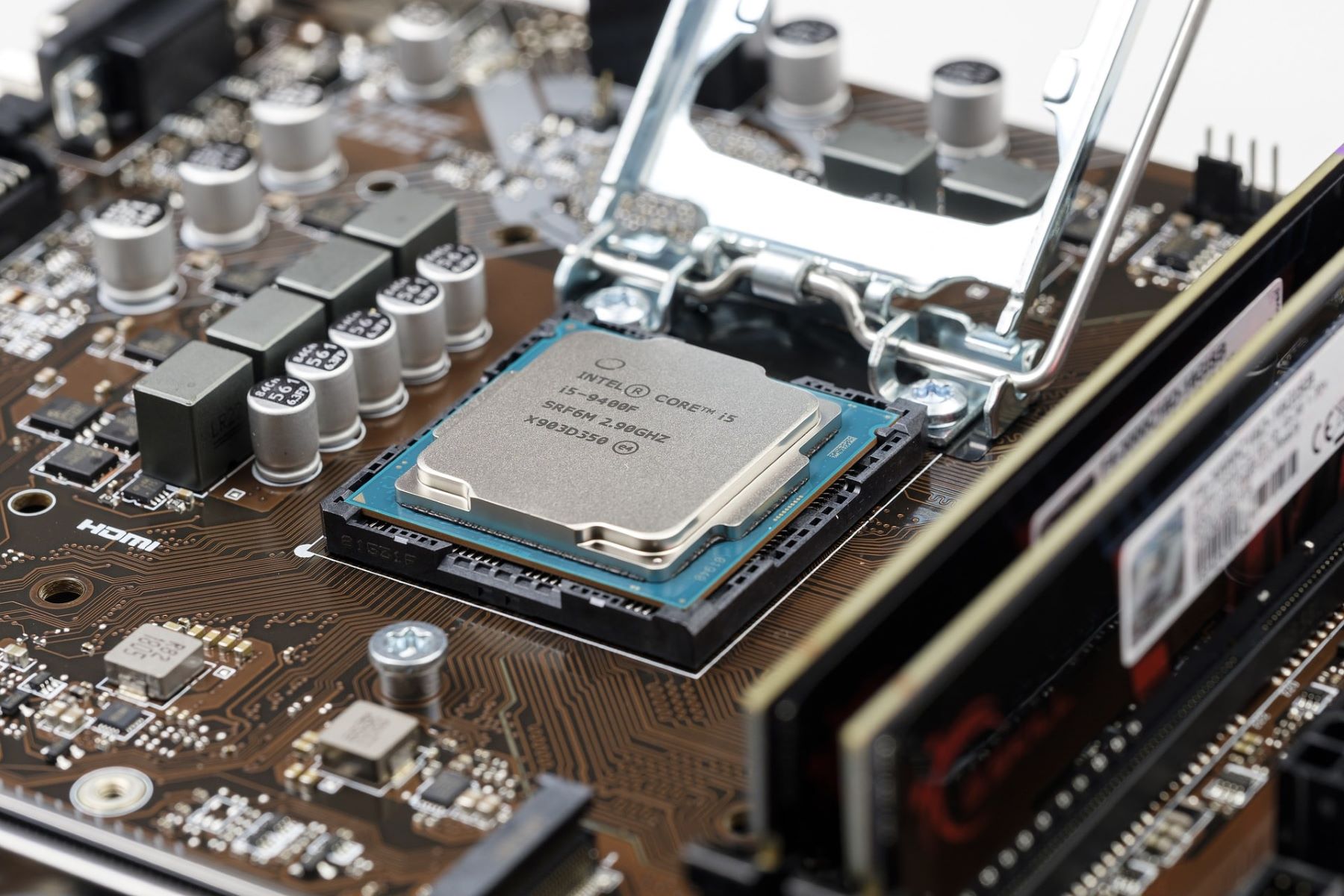Why is RAM Important?
Random Access Memory, commonly known as RAM, plays a crucial role in the overall functionality and performance of a computer system. It is a volatile form of memory that stores data and instructions required by the CPU (Central Processing Unit) to carry out tasks efficiently and swiftly. RAM acts as a temporary workspace where the computer can access and manipulate data on the fly, making it an integral part of the computer’s memory hierarchy.
One of the primary reasons why RAM is important is its ability to provide fast and temporary storage for data that is actively used by the computer. Unlike the computer’s hard drive or solid-state drive, which offer permanent storage, RAM allows for quick retrieval of data, resulting in faster processing speeds. The more RAM a computer has, the more data it can store at once, which leads to improved multitasking capabilities and overall performance.
Another key aspect of RAM’s importance is its role in running complex software and applications. Advanced applications such as video editing software, graphic design tools, and resource-intensive games require a significant amount of RAM to function smoothly. Insufficient RAM can cause these applications to run slowly or even crash, resulting in a frustrating user experience.
Furthermore, RAM is vital for system stability and responsiveness. When you open a program or file, it is loaded into RAM, allowing for quick access and smooth execution. Without sufficient RAM, the computer may have to rely on virtual memory, which uses a portion of the hard drive as temporary storage. However, virtual memory is significantly slower than RAM, leading to increased loading times and decreased system performance.
In addition to improving performance, RAM also contributes to energy efficiency. By storing frequently accessed data in RAM, the computer can minimize the need to access the hard drive or other slower forms of storage, thereby reducing power consumption and extending the battery life of laptops and mobile devices.
Overall, RAM is essential for ensuring a smooth and efficient computing experience. It enables faster data access, improves multitasking capabilities, and enhances the performance of resource-intensive applications. Whether you’re a casual user or a professional, having an adequate amount of RAM is crucial for maximizing the potential of your computer system.
How Does RAM Work?
Random Access Memory (RAM) is a vital component of a computer system that allows for fast and temporary storage of data. It operates on the principle of rapid data access, allowing the computer’s processor to retrieve and manipulate information quickly. Understanding how RAM works is essential for grasping its importance in a computer system.
RAM consists of a series of memory modules containing millions of individual memory cells, each capable of storing a single bit of data. These memory cells are organized into rows and columns, forming a grid-like structure. The computer’s processor sends memory addresses to the RAM, specifying the location of the data it needs to access.
When the processor sends a memory address, the RAM locates the corresponding memory cell and retrieves the stored data. This process is known as a read operation. The retrieved data is sent to the processor for processing and execution of instructions.
RAM not only allows for data retrieval but also facilitates data storage. When the computer needs to write data to RAM, the processor sends the memory address along with the data to be stored. The RAM then locates the appropriate memory cell and stores the new data, replacing the previous content. This process is known as a write operation.
One of the key aspects that make RAM a fast form of storage is its access time. RAM operates on nanosecond timescales, allowing for rapid data retrieval and storage. Unlike other types of storage, such as hard drives or solid-state drives, which have relatively slow access times in milliseconds, RAM can provide data to the processor almost instantaneously.
Another crucial feature of RAM is its volatile nature. This means that the data stored in RAM is temporary and is lost when the power to the computer is turned off. However, this volatility allows RAM to be dynamic in nature, enabling the computer to quickly adapt to changing data requirements.
It is important to note that RAM works in conjunction with the computer’s operating system, which manages the allocation and utilization of RAM resources. The operating system keeps track of the data stored in RAM, ensuring efficient utilization and allocation to different programs and processes.
In summary, RAM works by providing fast and temporary storage for data in a computer system. It allows for rapid data retrieval and storage, facilitating faster processing speeds and improved performance. Understanding how RAM operates is essential for optimizing its utilization and recognizing its significant role in overall system functionality.
What Happens to RAM During Shutdown?
During the shutdown process of a computer, the fate of the data stored in RAM is a crucial consideration. RAM, being a volatile form of memory, relies on a continuous supply of power to maintain the stored data. When the computer is shut down, the power is cut off, and this raises the question of what happens to the data stored in RAM.
When a computer is in the process of shutting down, the operating system initiates a sequence of tasks designed to safely close all running programs and processes. As part of this process, the operating system sends signals to applications and services requesting them to save any important data and perform necessary cleanup actions.
Once the shutdown command is executed, the power supply to the computer is cut off, resulting in an immediate loss of power to all components, including RAM. As a result, the data stored in RAM is quickly lost. This is due to the nature of volatile memory – it requires constant electrical power to hold the information in its memory cells.
However, it is important to note that the loss of data stored in RAM during shutdown is not a cause for concern. RAM is intended for temporary storage and is not designed to retain information when power is removed. The purpose of RAM is to provide fast access to data while the computer is in operation, allowing for efficient processing and multitasking.
When the computer is turned off and powered back on, the RAM is completely cleared, and the memory cells are reset. The computer starts up with a clean slate, ready to load and execute new instructions and data.
While the loss of data stored in RAM during shutdown may initially seem like a drawback, it is actually an advantage. This quick disposal of data ensures that no residual or unnecessary information remains in the RAM when the computer is powered back on. It allows the computer to start with a fresh state and avoids potential conflicts or performance issues that could arise from retaining old data in the RAM.
Nevertheless, it is essential to save any important data to a more permanent form of storage, such as a hard drive or solid-state drive, before shutting down the computer. This ensures that critical files and information are preserved even after the power is turned off and the contents of RAM are lost.
In summary, when a computer is shut down, the data stored in RAM is lost due to the volatile nature of this form of memory. The power cut-off during shutdown results in the immediate disposal of RAM data, preparing the computer for a fresh start the next time it is powered on.
Volatile Memory: The Key to RAM’s Functionality
RAM (Random Access Memory) is a type of volatile memory that forms a critical component of a computer’s memory system. Volatile memory refers to a type of storage that requires a continuous supply of power to retain data. This unique characteristic of RAM is the key to its functionality and its ability to provide fast and temporary storage.
The volatile nature of RAM allows for rapid read and write operations, making it an ideal choice for storing data that needs to be accessed and manipulated quickly. When the computer is powered on, the RAM is initialized, and it becomes ready to store and retrieve data at high speeds.
The volatility of RAM stems from its physical structure and the technology used. RAM consists of millions of tiny memory cells, each capable of storing a single bit of data as an electrical charge. These memory cells are arranged in a grid-like matrix, with rows and columns forming the memory address space.
When data is written to RAM, it is stored as electrical charges in these memory cells. To retrieve the data, the computer sends memory addresses to locate the corresponding cells and reads the stored charges. This process happens at incredibly fast speeds due to the volatile nature of RAM.
However, the volatility of RAM also means that its stored data is temporary. When power is removed from the computer, the electrical charges in the memory cells gradually dissipate, leading to the loss of data. This is why it is crucial to save important files and data to more permanent storage, such as a hard drive or solid-state drive, to ensure data preservation even when the computer is turned off.
The volatility of RAM also offers an advantage in terms of security. Since the data stored in RAM is temporary and quickly disposed of during shutdown, it significantly reduces the risk of unauthorized access to sensitive information. Once the power is cut off, any remnants of data stored in RAM are effectively erased.
Moreover, the volatile nature of RAM allows for flexibility and dynamic allocation of resources. The operating system can quickly allocate and deallocate memory space in RAM as needed by different programs and processes. This dynamic allocation enables efficient multitasking and ensures that the computer system can adapt to changing memory requirements.
In summary, the volatility of RAM is the key to its functionality and purpose. It allows for fast read and write operations, dynamic resource allocation, and secure disposal of data. While the temporary nature of RAM may seem like a limitation, it is precisely this volatility that makes RAM an essential and effective component of a computer’s memory hierarchy.
The Role of the Computer’s Operating System in RAM Storage
The computer’s operating system plays a crucial role in managing the storage and utilization of RAM (Random Access Memory). As the bridge between hardware and software, the operating system is responsible for efficiently allocating, accessing, and organizing data in RAM.
One of the primary functions of the operating system in RAM storage is memory management. It ensures that the available RAM is utilized optimally by allocating memory space to different programs and processes. The operating system keeps track of the memory utilization and assigns memory blocks to applications based on their needs, prioritizing active and high-priority tasks.
When an application or program is launched, the operating system creates a process in which sections of the program’s code and data are loaded into RAM. This allows the CPU (Central Processing Unit) to quickly access and execute the instructions. As the program runs, the operating system manages the memory usage, swapping data in and out of RAM as needed, to free up space and maintain performance.
Furthermore, the operating system facilitates virtual memory, which extends the effective size of RAM by using a portion of the computer’s hard drive or solid-state drive as temporary storage. It creates a mapping between the virtual addresses used by programs and the physical addresses in RAM or secondary storage. This allows for efficient memory utilization, even when the available physical RAM is limited.
The operating system also plays a crucial role in ensuring data integrity and reliability in RAM. It implements various techniques to protect data stored in RAM from corruption or unauthorized access. For example, it utilizes memory protection mechanisms to prevent one program from accessing or modifying the data of another program, enhancing system security and stability.
The operating system also manages the process of swapping data between RAM and secondary storage, such as the hard drive, during times of high memory demand. When RAM becomes fully utilized, the operating system transfers less frequently used data to secondary storage and retrieves it as needed. This process, known as paging, allows the computer to efficiently manage memory resources and avoid excessive usage of RAM.
Additionally, the operating system handles the memory deallocation process, ensuring that resources are efficiently released when they are no longer needed. When an application or process ends, the operating system deallocates the corresponding memory space, making it available for other tasks.
In summary, the computer’s operating system plays a vital role in managing the storage and utilization of RAM. It facilitates memory management, virtual memory, data protection, and efficient allocation of resources. The operating system acts as a crucial intermediary between hardware and software, optimizing the performance and functionality of RAM in a computer system.
The Shutdown Process and RAM Disposal
During the shutdown process of a computer, proper disposal of the data stored in RAM (Random Access Memory) is a critical step to ensure system integrity and prepare for the next power-on cycle. The shutdown process involves a series of tasks that facilitate the orderly termination of running programs and services and ensure a clean slate for the next startup.
When the user initiates a shutdown command, the computer’s operating system carries out several operations to prepare for a safe power-off. These operations include saving any unsaved data, closing running programs, and releasing system resources.
As part of the shutdown process, the operating system signals all running programs and services to terminate gracefully. This signaling prompts applications to save any important data and perform necessary cleanup actions. When applications receive the signal, they typically write information to storage devices, such as hard drives or solid-state drives, to preserve their current state.
Once all running programs have been closed, the operating system proceeds to shut down all system services. These services include background processes and drivers that are essential for the functioning of the computer. The shutdown process ensures that these services are terminated cleanly, freeing up system resources and preparing for the shutdown of hardware components.
During this process, the operating system also takes steps to clear the contents of RAM to ensure the privacy and security of data. It deallocates the memory used by programs and processes, effectively erasing their data from RAM. This ensures that confidential information, such as passwords or sensitive documents, is not left behind in RAM after shutdown.
When the power supply to the computer is cut off, either by the user or by a power outage, the data stored in RAM is immediately lost. This is due to the volatile nature of RAM, which requires a continuous supply of power to retain data. The sudden loss of power results in the quick disposal of RAM data, preparing the computer for a fresh start when it is powered on again.
It is important to note that the temporary loss of data in RAM during shutdown is expected and does not pose any risk or concern. The purpose of RAM is to provide fast and temporary storage for active data during the computer’s operation. It is not intended as a long-term storage solution.
However, it is crucial to save any important data to permanent storage, such as hard drives or solid-state drives, prior to shutting down the computer. This ensures that important files and information are preserved even after the power is turned off and the contents of RAM are lost.
In summary, the shutdown process involves proper disposal of the data stored in RAM to ensure system integrity. The operating system initiates a series of tasks to save unsaved data, close running programs, release system resources, and clear the contents of RAM. The volatile nature of RAM necessitates the immediate loss of data when the power is cut off, preparing the computer for a fresh start upon the next power-on cycle.
The Possibility of Data Loss During a Power Failure
A power failure can pose a significant risk to the integrity and accessibility of data stored in a computer system. When the power supply is abruptly cut off, there is a possibility of data loss and potential damage to files and applications. Understanding the impact of a power failure on data is crucial for implementing necessary measures to mitigate the risks.
One of the primary concerns during a power failure is the loss of data stored in RAM (Random Access Memory). RAM is a volatile form of memory that requires constant electrical power to retain data. When the power is abruptly cut off, the data stored in RAM is quickly lost, as the memory cells no longer hold their charges. This can result in the loss of unsaved work and any other data that was temporarily stored in RAM.
In addition to the data loss in RAM, a power failure can also impact data stored on storage devices, such as hard drives or solid-state drives. If a computer is in the middle of writing or reading data when the power failure occurs, it can lead to file corruption or incomplete operations. This can result in data becoming inaccessible or irreversibly damaged.
Furthermore, power failures can disrupt the process of saving data to storage devices. For example, if a file is being saved when the power failure occurs, there is a risk that only a portion of the file will be saved, leading to a corrupted file. Additionally, inconsistencies can arise in file structures or system metadata, making it difficult to properly access and retrieve data after a power failure.
To mitigate the risk of data loss during a power failure, various measures can be implemented. Uninterruptible Power Supply (UPS) systems can provide temporary power to allow the computer system to shut down properly in the event of a power failure. These systems typically provide a few minutes of backup power, enabling users to save their work and safely shut down the computer.
Data backup solutions are also crucial for protecting against data loss during a power failure. Implementing regular backups ensures that important files and data are duplicated and stored in a separate location. This allows for easy retrieval and restoration in the event of data loss or system damage caused by a power failure.
Moreover, the use of surge protectors or power conditioners can help safeguard computer systems from sudden power fluctuations or power surges that can occur during power failure events. These devices regulate the incoming electrical power, minimizing the risk of damage to components and data loss.
In summary, a power failure can result in data loss and potential damage to files and applications. The loss of data in volatile memory, such as RAM, is an immediate concern, as it occurs as soon as the power is cut off. Additionally, power failures can impact data stored on storage devices, leading to corruption or incomplete operations. Implementing measures such as uninterruptible power supplies, data backups, and surge protectors can help mitigate these risks and ensure data integrity during power failure events.
RAM’s Disadvantages and Limitations
While RAM (Random Access Memory) is an essential component of a computer system, it does have some disadvantages and limitations that are important to consider. Understanding these drawbacks can help users make informed decisions about their computer’s memory configuration and optimize their system’s performance.
One of the primary limitations of RAM is its cost and capacity. RAM is generally more expensive than other forms of storage, such as hard drives or solid-state drives. As a result, having a large amount of RAM may not be economically feasible for all users. The limited capacity of RAM can also be a restriction, especially when running resource-intensive tasks or applications that require a significant amount of memory.
Another disadvantage of RAM is its volatile nature. RAM requires a continuous supply of power to retain data. When the computer is powered off or experiences a power failure, the data stored in RAM is immediately lost. This means that RAM is not an ideal solution for long-term data storage and necessitates the use of other types of storage, such as hard drives, for preserving important files and data.
Furthermore, RAM’s limited capacity can lead to performance issues when running memory-intensive applications. When the available RAM is insufficient to accommodate the data and instructions required by these applications, the computer relies on virtual memory. Virtual memory uses a portion of the hard drive as temporary storage, but accessing data from the hard drive is significantly slower than accessing data from RAM. This can result in slower performance and decreased overall system speed.
RAM’s limitations also extend to its access time and speed. While RAM is much faster than other forms of storage, such as hard drives or solid-state drives, there are still limitations in terms of access speeds. As processors continue to improve in speed and efficiency, RAM may act as a bottleneck, with slower access times impacting overall system performance.
Furthermore, RAM’s speed is contingent on other hardware elements, such as the motherboard and CPU. If the CPU or motherboard does not support high-speed RAM, the full potential of the RAM’s speed cannot be realized. This compatibility limitation can restrict the performance gains one might expect from investing in faster RAM modules.
The overall design and architecture of a computer’s memory system can also impact RAM’s limitations. For example, the memory hierarchy and the way the operating system manages and allocates memory can affect the system’s efficiency in utilizing RAM effectively.
Despite these limitations, RAM remains an essential component of a computer system, offering fast and temporary storage for active data. By understanding and working around its constraints, users can optimize their RAM utilization and enhance their computer’s performance.
Ways to Preserve RAM Data during Shutdown
While data stored in RAM (Random Access Memory) is typically volatile and lost during the shutdown process, there are certain techniques and tools that can help preserve RAM data in specific scenarios. These approaches can be useful when there is a need to retain the current state of running programs or projects for immediate resumption upon power-on.
One common method to preserve RAM data during shutdown is to use a hibernation or sleep mode. Many operating systems offer hibernation functionality that allows the computer to save the contents of RAM to the hard drive or other non-volatile storage before shutting down. When the computer is powered back on, the system restores the saved RAM data, effectively resuming the previous state.
Hibernation is particularly useful for users who want to pick up their work exactly where they left off without waiting for applications to reload and reconfigure. It is important to note that hibernation requires sufficient storage space on the hard drive or other designated storage device to accommodate the RAM data.
Another approach to preserving RAM data during shutdown is to utilize specialized software or tools. These tools typically capture the state of running programs and save them to non-volatile storage before shutdown, allowing for easy restoration of the environment upon power-on.
Some software tools offer snapshot functionality, creating a snapshot of the RAM data and saving it to disk. These snapshots can be used to restore the previous state of the computer, including the opened files, running applications, and system settings.
However, it’s important to note that these methods may not be suitable for all scenarios and may require additional configuration or compatible operating systems and hardware. Furthermore, such tools may consume additional resources and can result in longer shutdown and startup times.
It is also worth mentioning that preserving RAM data during shutdown should be approached with caution, as it can raise security concerns. The data in RAM may include sensitive and confidential information, and saving it to non-volatile storage increases the risk of unauthorized access or data leakage. Encryption or password protection should be considered to safeguard the saved RAM data.
It is crucial to understand that the volatile nature of RAM is designed to ensure data privacy and system integrity. Saving data in more permanent storage, such as hard drives or solid-state drives, is the recommended method for long-term storage and reliable data preservation.
In summary, while RAM data is typically lost during the shutdown process, techniques such as hibernation or specialized software can help preserve and restore the state of RAM data upon power-on. These approaches can be beneficial when immediate resumption of work or preservation of running programs is necessary. However, it is important to consider security implications and the limitations of these methods, as the volatile nature of RAM ensures data privacy and system integrity.









